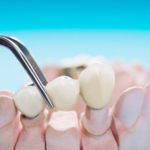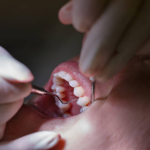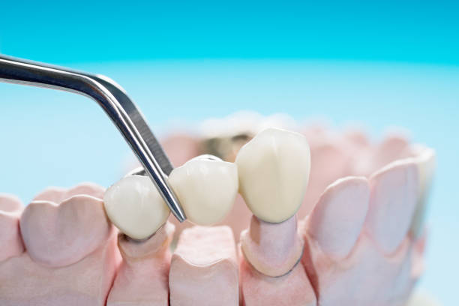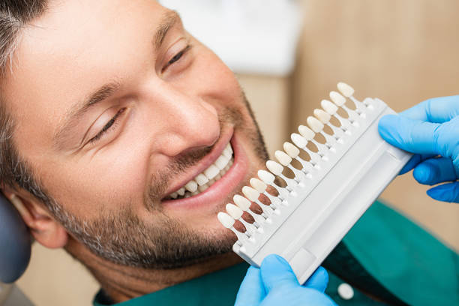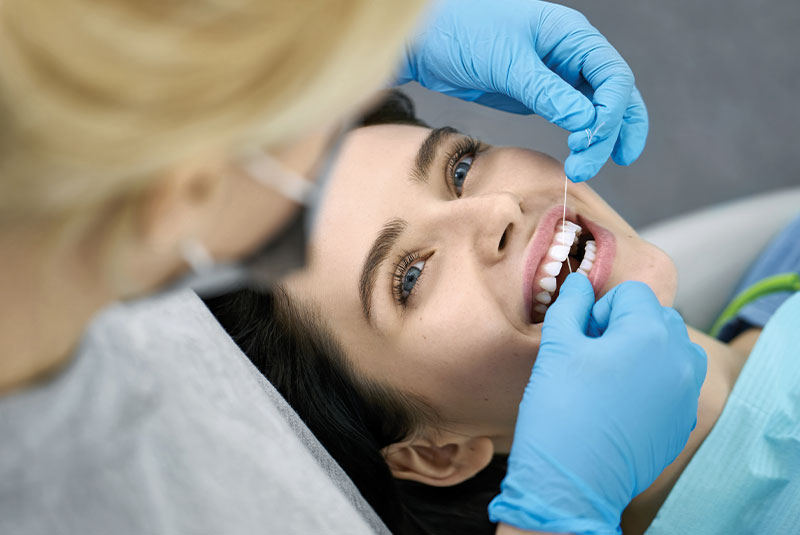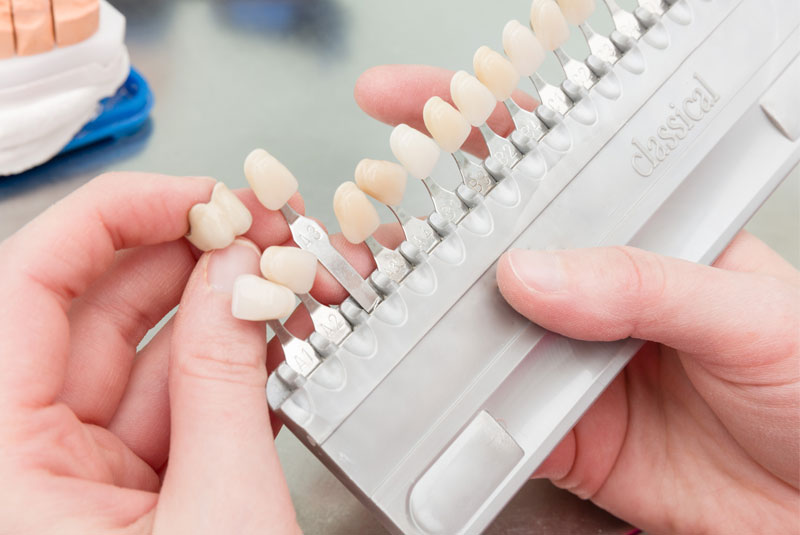Exposed roots from dental restorations like fillings, crowns, or veneers are a telltale sign of compromised oral health. We know that exposed dental roots indicate poor oral hygiene and subpar dental care, but what does it mean for your general health? And how can you reverse the damage from this cosmetic issue?
Exposed roots’ impact on oral health may be more profound than you think. Exposed tooth roots are small indicators of underlying issues with your gingival tissue, the soft tissue around your teeth. Although not necessarily dangerous, they suggest that more work should be done to have healthy teeth with restored surfaces and no signs of gingivitis or periodontal disease.
Read on to learn why and how to address the issue.
Teeth Roots Exposed: What’s Going On?
First, let’s talk about the health of your gingival tissue. Gingiva is the soft, spongy tissue that surrounds each tooth. It is responsible for holding the teeth in place, allowing chewing and speaking. When the gingiva is inflamed or irritated, it becomes red and swollen and can cause pain when eating or brushing teeth.
This is known as gingivitis or the early stages of periodontal disease. Gingivitis can be prevented with regular brushing and flossing, as well as an excellent oral hygiene routine and an antimicrobial rinse.
On the other hand, periodontal disease will require a little more attention. It can be treated with deep cleaning, fluoride treatments, and specialized gum treatments, which are more involved than simple brushing and flossing.
When these oral diseases are left untreated, they can all lead to your tooth root exposure and can even cause tooth loss.
Recognizing When A Root Is Exposed
An exposed tooth root is easy to spot but isn’t always easy to identify. The first and most noticeable symptom of tooth root exposure is sensitivity in the tooth and gums.
A tooth root may become exposed for a few reasons. If the gingival tissue around the tooth is inflamed, it may shrink and show the root tissue.
If the tooth is traumatized and is healing, the root may be noticeable because the tissue has shrunk back further. A tooth root will likely be exposed if the tooth is slightly broken off or decayed and needs a root canal. Finally, you may see the root tissue if you have a minor gum disease issue.
Typical Symptoms Of An Exposed Tooth Root
If you have any signs or symptoms of an exposed tooth root, you should have your oral health assessed by a dentist as soon as possible. The most common symptom is a tooth that feels loose, matched with bleeding when brushing the teeth.
You may also experience a change in how the tooth feels and look. A tooth with exposed roots may look longer than usual due to the gums pulling further away from the crown. Any exposed tooth root indicates something is wrong in the mouth. An exposed tooth root may be a symptom of other oral health problems like plaque, gingivitis, or periodontal disease.
Be On The Look Out For These Causes (and How to Avoid Them)!
Poor Oral Hygiene
Suppose you aren’t brushing your teeth correctly and aren’t flossing. In that case, you are increasing your risk for all oral health issues, including gingivitis and periodontal disease, which can all lead to tooth root exposure. Make sure to brush twice daily and gargle with an antibacterial mouthwash for extra protection.
Gum Disease
If you have gum disease, the tissue around your teeth becomes inflamed and shrinks back, sometimes exposing the tooth root. Make sure to contact your dentist immediately when something feels off in your mouth.
Trauma
The root may be slightly exposed if a tooth is somewhat chipped or has been hit with force. Go to the nearest dental clinic when suffering from any tooth trauma to avoid tooth loss due to tooth root exposure.
Options For Fixing Your Exposed Tooth Root
If you have an exposed tooth root and want to fix the tooth, you have a few options.
When you already have a crown or veneer, the dentist can re-do the work, adding more color to the tooth and covering the root. If you recently had a dental filling procedure, your dentist can check it and take the necessary actions to correct the filling and cover the exposed root.
If you have a tooth broken off, the dentist will likely discuss the possibility of a root canal or dental implant in case the tooth needs to be removed entirely. In case of minor gum disease, your dentist will likely recommend an antimicrobial rinse, more frequent flossing and brushing, and possibly a gum treatment like a special toothpaste or mouthwash.
Suggestions For An Exposed Root Treatment
The first step in treating an exposed tooth root is to clean up your oral health routine. Make sure you brush your teeth twice daily with a soft-bristled toothbrush, use fluoridated toothpaste, and floss daily. Avoid sugary and starchy foods, which are sticky and easy for bacteria to grow on.
See your dentist for a cleaning and a check-up. Make sure the dentist is aware of any issues you have with your teeth or gums. The dentist can assess your situation and let you know what you can do to heal the gingival tissue and protect the tooth, avoiding tooth root exposure.
When Roots Are Exposed Too Far For An Easy Fix
If you have an exposed tooth root that is too far gone, the dentist may discuss the possibility of tooth extraction. Extraction is the removal of a tooth and is the last resort to protect the health of the remaining teeth. If you have significant gum disease, the dentist may recommend extraction of the compromised teeth followed by a gum transplant (also called a dental graft).
A gum graft is a procedure in which healthy gum tissue is surgically removed, placed on the teeth, and allowed to grow new tissue. A dentist may do a minimal root canal if you have a non-life-threatening amount of gum disease.
A root canal is a procedure that removes the diseased pulp from the center of the tooth and replaces it with a particular material. The root canal is often done with a crown, which allows for a long-term solution to gum disease.
An Exposed Tooth Root Gets You To The Dentist; Now It’s Your Turn To Keep Your Teeth Healthy
If you have an exposed tooth root and take the necessary steps to fix it, you will likely be fine. However, it’s important to remember that having even a small amount of exposed tooth root can indicate that you need to take better care of your teeth and gums.
You don’t want to go through this again! To avoid exposing your roots and other oral health issues, brush and floss daily, and follow a regular dental hygiene routine. And don’t forget to talk to your dentist about your overall oral health!
Contact Smiles That Rock Dental Clinic For YOur Next Dental Visit
At Smiles That Rock, we’re proud to offer high-quality dental services in a comfortable and welcoming environment. We invite you to call or book an appointment online today.
We can provide our patients with high-quality dental care thanks to our friendly and experienced staff. In addition to dental cleanings, we offer other services such as X-Rays, fillings, extractions, and more. We strive to provide the highest quality of care in every aspect of our practice, so we’re committed to providing outstanding customer service.
We are also dedicated to providing exceptional value for each and every one of our patients. To learn more about our services and schedule an appointment, please contact us today!



